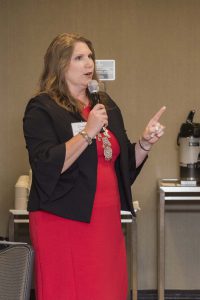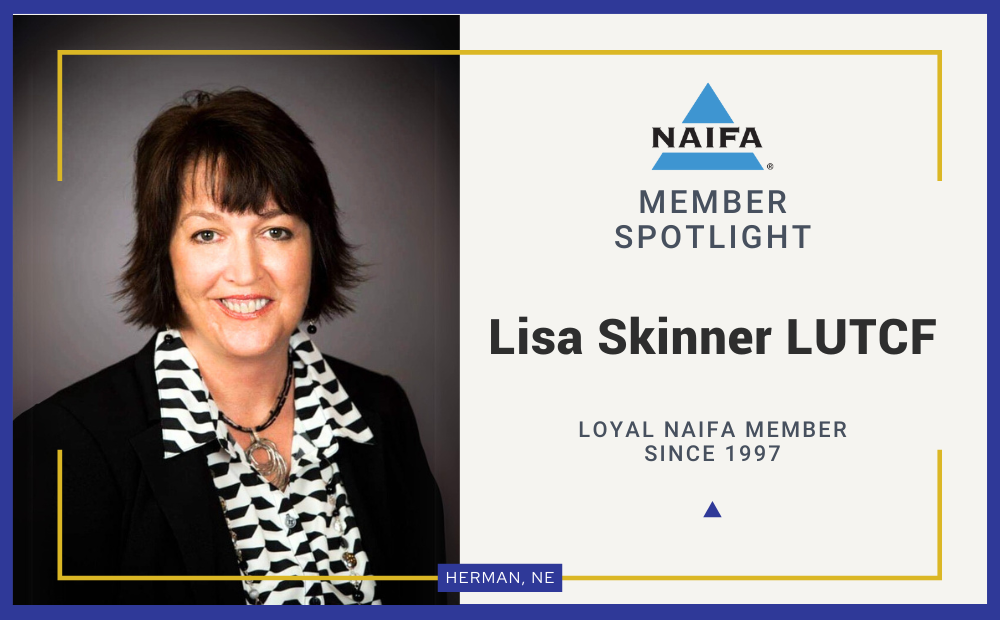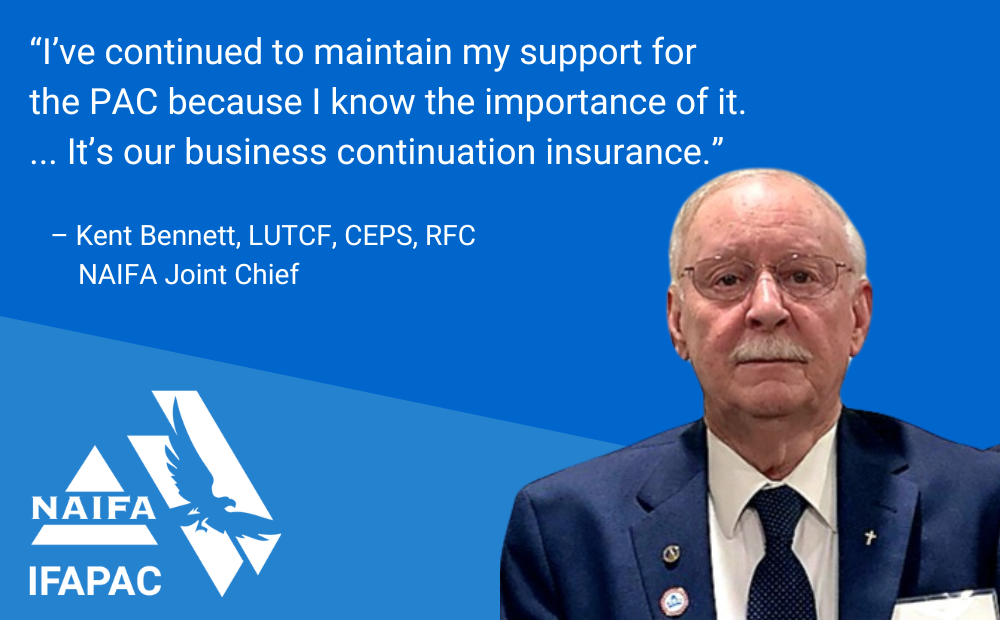For the financial-services executives who attended NAIFA’s second annual Diversity Symposium, the invitation-only event was a unique opportunity to connect, learn and grow. During the meeting held in conjunction with NAIFA’s 2018 Congressional Conference, they networked with experts and colleagues, shared best practices, and gained the critical insights they need to take their D&I initiatives to higher levels of success.
After sharing a few “unique” things about themselves, participants were given a warm welcome by Tariq Khan, the symposium’s lead presenter. Khan is CEO and Founder of Global Diversity Marketing/Global Diversity University. Global Diversity Marketing provides solutions for marketing, segmentation, diversity management, and multicultural marketing, and Global Diversity University is a joint venture of Global Diversity Marketing and the Hoopis Performance Network.
Khan then explained the symposium’s primary goals, which were to:
- Review the state of diversity and inclusion in the U.S.
- Understand the D &I challenges and opportunities in the financial-services industry.
- Identify strategic solutions designed to bridge the D&I gap between the distribution channel and the customer.
[divider]
”Diversity is being invited to the dance, while inclusion is being asked to dance. We want you to come and dance with us.”—Cammie Scott, NAIFA Secretary and Chair of NAIFA’s Diversity Task Force
But before delving into these objectives, Khan took some time to explain the critical importance of D&I. “D&I is no longer just a nice thing to do or to talk about,” he said. “It is much more than that. Today, there is a sound business case for employers to pursue D&I.” So, if D&I is not happening at their organizations, they should find out the reasons why and develop a plan for immediate action.
Why D&I matters
 Tariq Khan addresses symposium participants.
Tariq Khan addresses symposium participants.
In today’s business environment, there are many reasons companies of all sizes should embrace diversity and inclusion, Khan added. For one thing, the workforce is rapidly changing. One in three people in the U.S. is now multicultural, women own 40 percent of America’s privately-owned businesses, and Millennials constitute the nation’s largest group in the workforce.
Against this backdrop there has been a decline of life insurance sales, even as the U.S. population continues to grow at a steady pace. There is obviously a disconnect here, Khan pointed out, and this disconnect may be happening partly because “we don’t look like our customers,” he said.
For example, while 81 percent of financial advisors in the U.S. are white, only 61 percent of the population is white. And only 15. 7 percent of all financial advisors are female, while women make up 50.8 of the population.
The industry has taken notice of this disconnect and several organizations have assumed a leadership role in promoting D&I. For example, NAIFA is doing everything it can to move the D&I needle forward, according to NAIFA Secretary and Chair of the association’s Diversity Task Force, Cammie Scott, MSIE, CLTC, LUTCF, REBC, SHRM-SCP, SPHR.
NAIFA recently developed a Strategic Plan and created a Diversity Task Force to advance diversity in the financial-services industry, Scott said. Since then, the association has completed several D&I initiatives, including the creation of a Diversity Champion Award to recognize NAIFA members who are helping to move diversity forward. NAIFA has also conducted a few webinars on diversity and inclusion and created Diversity Action Reports, which offer solutions and strategies for improving diversity initiatives and working with diverse groups. “Diversity is being invited to the dance,” Scott said, “while inclusion is being asked to dance. We want you to come and dance with us.”
Scott was joined on the podium by NAIFA President, Keith Gillies, CFP, LUTCF, and NAIFA Past President Paul Dougherty, LUTCF. Both leaders thanked the participants for all they are dong to create a more inclusive field force and noted that the symposium is an additional step NAIFA is taking to promote diversity and inclusion.
Understanding D&I
Khan then pointed out two important factors that people must understand as they implement their D &I programs. First, there is a difference between “diversity” and “inclusion.” While diversity focuses essentially on the unique differences and similarities among people, organizations and entities, he explained, inclusion entails the creation of an environment that values everyone and engages everyone. In other words, he stressed, diversity is “what is,” while inclusion is the ability and willingness to value the differences among people.
Second, when do you know if diversity is working? “When we do not need to talk about it,” he responded.
The many benefits of D&I
Companies that embrace D&I often experience a wide range of benefits, according to Kahn. For instance, D&I contributes to economic growth, helps reduce employee turnover and its attendant cost, and fosters a creative and innovative workplace.
In addition, it enables the organization to stay competitive, helps enhance its reputation and leadership qualities, and allows it to successfully reach diverse consumers and clients through its diverse workforce.
In spite of these benefits, not every industry has embraced D&I. In fact, according to Lori Epstein, a Global Diversity Marketing consultant and an attorney and expert in estate, business and retirement case design, the asset-management industry is among the least diverse groups in the U.S. Several large companies have been forced to make financial settlements because of racial discrimination or lawsuits.
But avoiding litigation “should not be the sole driver for change,” Epstein said. Instead, companies should embrace diversity to develop a unique competitive advantage and should become sustainable by being more inclusive. In other words, companies should drive business growth and become industry leaders through their D &I initiatives.
The reasons for the industry’s slow acceptance of D&I are not difficult to comprehend. It has not yet been disruptive in its approach to D&I, the topic of D&I is not typically a C-Suite priority, there appear to be few D& I best practices or success stories, and lack of financial resources may be hindering some D &I initiatives.
- Define their expected outcome.
- Identify critical factors.
- Develop a plan of action and a timeline to go with that plan.
- Monitor, engage, and “own” the project.
Brainstorming best practices
To heighten participant engagement, Khan asked the participants to form four groups and to take part in a “brainstorming exercise,” during which they would discuss the four drivers of D&I: Talent, marketplace, innovation and reputation.
Participants in the Talent Group were asked to address various questions, such as: Where are you seeking new talent? How do you prepare your current employees to truly embrace D &I? How do you groom new employees for success? Does your leadership reflect your workforce and marketplace?
The Marketplace Group was asked to address: What are some of the unmet needs in the marketplace? What non-traditional markets might we grow and expand our business opportunities?
The Innovation Group’s task was to address several questions, including: What can we do to build a better culture of innovation in our organization? What new products and services could we create to meet unmet needs in the market? Who can we bring into our organization that will help us stretch our thinking and expand business possibilities?
Finally, participants in the Reputation Group were asked to address the following questions: How can we improve our organization’s image and brand by those inside and outside our company? What can our company do better to build greater goodwill in the communities where we operate and do business? How can be better communicate our values of D&I internally and externally?
After a few minutes of deliberation, the four groups shared their observations, suggestions and recommendations for improving D&I. Essentially, they said, companies wishing to enhance their D&I programs should take a variety of action steps, including identifying their company influencers, creating think tanks, partnering with external sources if necessary, and training employees on how D&I impacts brand reputation.
Achieving success
As the meeting drew to a close, Khan advised the participants to take the following steps in improving their D&I operations:
- Share what they have learned at the symposium with their colleagues and co-workers.
- Select the top three ideas they can realistically influence or implement at their organizations and act upon them.
- Establish a timeline of actionable items for their D&I programs.
- Anticipate some of the roadblocks and speed bumps they are bound to encounter and take steps to avoid or overcome them. For example, D&I may not be a priority at their organization, lack of money might be a deterrent, they may have too much on their plate already, and they may face a lack of direction as they develop their D&I programs.
Overcoming obstacles
Successfully addressing these challenges is not easy, Khan pointed out, but it can be done. For example, if D& I is not a priority at their organization, they should find a mentor or sponsor. And if they have too much on their plate already, they should select a few meaningful initiatives and focus on these.
Khan then urged the participants to watch out for a few things that often derail D& I programs. For example, they should be aware of “unconscious bias,” should not be too quick to judge people, and should not have preconceived ideas. Last but not least, they should always remember that the white male is also part of diversity and inclusion.
“Become your company’s champion,“ he advised them. “Become the industry’s advocate, and become a NAIFA D&I Champion.”













.png?width=300&height=300&name=CC%202025%20Ad%20(300%20x%20300%20px).png)
.png?width=300&height=600&name=Tax%20Talk%20Graphic%20-%20email%20tower%20(300%20x%20600%20px).png)



.png?width=300&name=NAIFA-FSP-LH%20with%20tagline%20-%20AT%20blog%20email%20ad%20(300%20x%20250%20px).png)
.png?width=728&height=89&name=2024%20Congressional%20Conference%20(728%20x%2089%20px).png)
